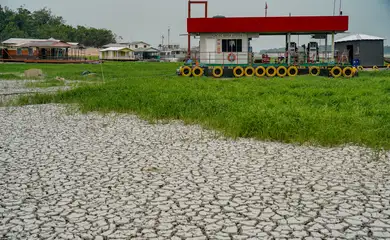Tougher inspection leads to 84% plunge in gold mining

The fight against illegal mining and the illegal gold trade in Brazil has resulted in an 84 percent slump in gold production from the country’s mines. According to Instituto Escolhas, the decrease stems from the control measures adopted by the government in 2023.

Among the strategies cited by the institute is the compulsory use of electronic invoices for gold trading. “Until then, the invoices were on paper, filled out by hand, making room for fraud and hindering control by the authorities,” the study says.
Another game-changing move with an “immediate result in the market” was the end of gold transactions in mines “based on the good faith of those involved.” This is shown in the study Ouro em Choque: Medidas que Abalaram o Mercado (“Gold in Shock: Measures that Shook the Market”), released this week by the institute.
“Proof of this is that mines saw a production of 31 tons of gold in 2022. In 2023, after the changes, this volume dropped to 17 tons, down 45 percent,” says the study as it provides an assessment of the impact of the changed trade rules. The 14-ton decline is equivalent to BRL 4.3 billion.
In 2024, the drop is even more pronounced. From January to July, the output from gold mines was 84 percent lower than in the same time span in 2022.
The text also shows that over 70 percent of this plunge occurred in the gold mines of Pará. From 2022 to 2023, the state produced 10 tons less.
“From January to July 2024, the drop in mining production in the state is already 98 percent compared to the same period in 2022,” the institute added.
The research reported that, as per official numbers, by 2022 Brazil was exporting more gold than it was producing—some 7 tons more on average. “This figure is an indication of illegality in the market, as it points to volumes of gold that were possibly not recorded in official production, but have reached foreign markets in recent years,” the document reads.
“In 2023, this pattern changed,” it adds, as it notes that Brazilian gold production had a surplus of 8 tons in exports in that year. “This may indicate that the surplus was sold through channels other than official exports,” the institute adds.
Exports
Given this more controlled scenario, gold exports fell by 29 percent in 2023, and by 35 percent from January to July 2024 compared to the same span in 2022.
The states that recorded the sharpest drops in gold exports in 2023 were São Paulo, “which does not produce gold, but drains the metal from mines in the Amazon,” and Mato Grosso, where mining predominates.
With regards to destinations, the institute draws attention to the drop in exports to India, the United Arab Emirates, and Belgium. Combined, these countries stopped buying 18 tons of gold—mainly from São Paulo, Mato Grosso, Rio de Janeiro, and the Federal District.
Doors closed to illegal gold
“The gold market went into shock. Officially registered production and exports have fallen substantially, even against a backdrop of fairly high gold prices, which tend to increase these figures,” the study says, stating that this movement shows that ‘an important door has been closed to illegal gold,’ raising the costs and risks of illicit operations for gold that was previously easily heated up and exported as legal.
According to the institute’s Research Director Larissa Rodrigues, whenever legal control measures are implemented, there is naturally a surge in costs for those who produce or trade gold illegally, including abroad.
“And by increasing the cost of illicit activity, we stifle the illegal market,” she told Agência Brasil.
These measures, she went on to argue, are just the beginning of a process that aims to bring about a wholesale transformation in the sector. “Fighting illegal mining must be a priority, as it causes enormous environmental as well as social damage that is difficult to reverse,” she pointed out.
History
Early in 2023, the damage caused by illegal mining gained greater visibility due to the problems stemming from the humanitarian crisis in the Yanomami indigenous territory in the Amazon state of Roraima. But public institutions and NGOs had already been warning about the situation in recent years. The expansion of mining in the Brazilian Amazon quadrupled between 2010 and 2020, as per a dossier by Aliança em Defesa dos Territórios, an organization created in 2021 by indigenous communities.




